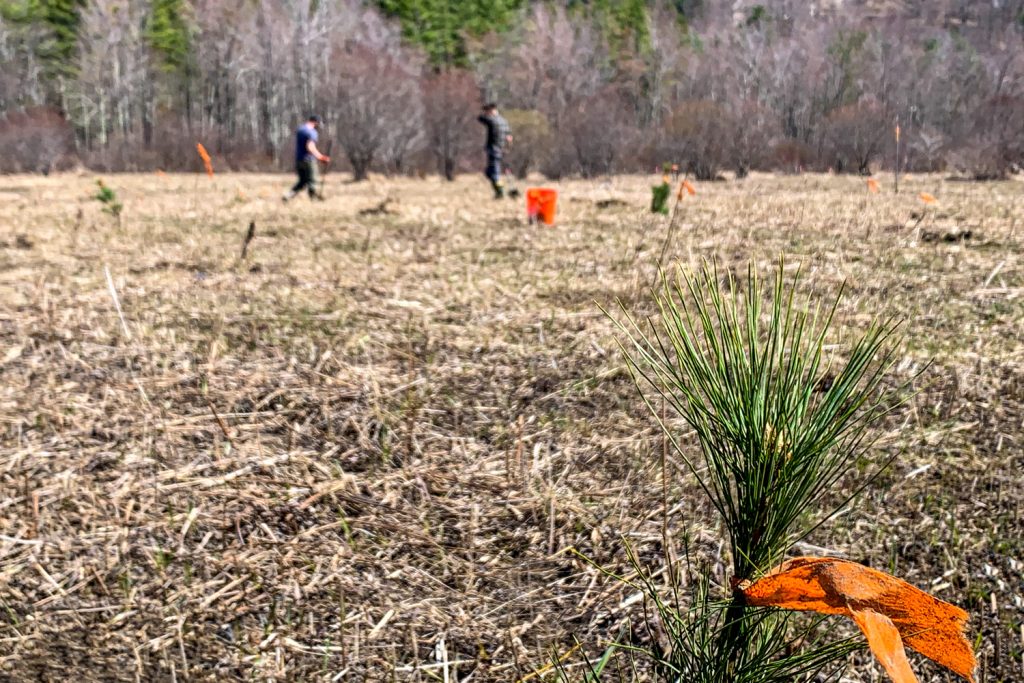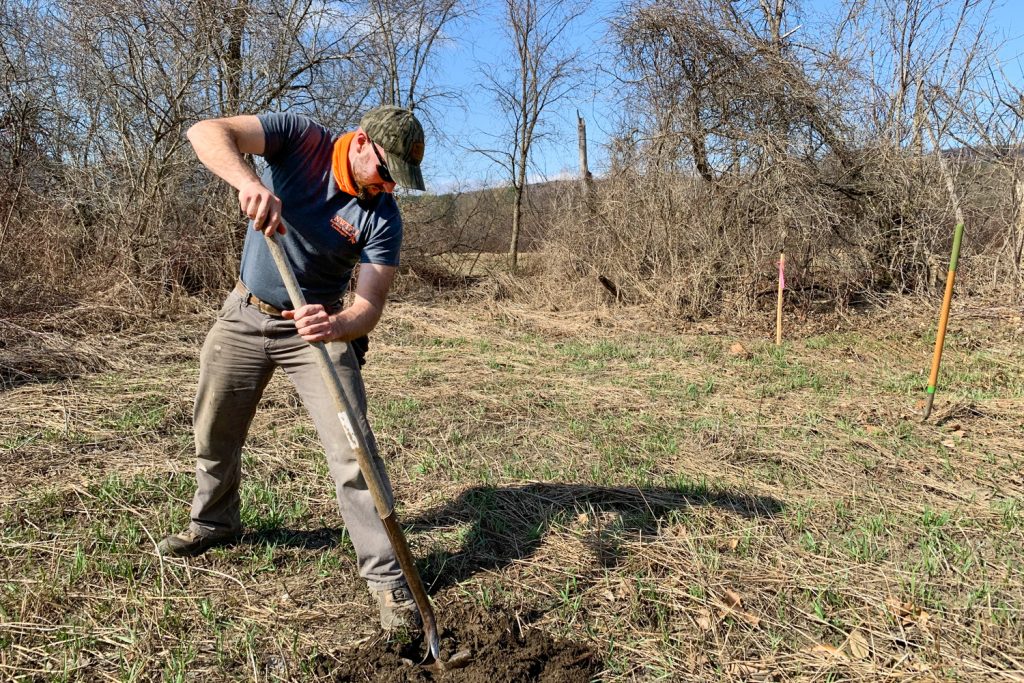The Right Ingredients for Conservation Success
Sweat equity, partnering with equally determined organizations, raising crucial funds, engaging volunteers, revitalizing wild turkey and overall wildlife habitat on a landscape level — these are the pillars of success evident in the ongoing floodplain restoration project in Vermont’s Otter Creek Wildlife Management Area.
The 1,139-acre Otter Creek WMA encompasses the towns of Mt. Tabor and Danby and was acquired by the Vermont Fish and Wildlife Department in the mid-1960s. Most of the WMA is forested, but it also contains 260 acres of wetlands, including a stretch of Otter Creek, which runs through the entire length of the WMA and is also the longest river contained entirely in the state, stretching over 92 miles from its headwaters in the Green Mountains to Lake Champlain.
While the WMA is a hub for anglers and hunters and supports a variety of wildlife, land managers have observed increased flooding and erosion, which negatively impacts wildlife habitat and water quality downstream. The NWTF, the Vermont Fish and Wildlife Department, Otter Creek Natural Resources Conservation District and the Arbor Day Foundation, planted 3,800 stems in April as the first phase of the restoration project. Installation of beaver guards to prevent browsing and herbaceous control around the tree stems will begin in late May. Additional funding is sought to plant another 1,200 stems in fall 2021.
“The riparian zone [the land and plant community near the stream or river ] is prone to flooding during the spring and during storm events,” said Matt DiBona, NWTF’s district biologist for New England. “Planting trees in these areas has a variety of benefits, including helping filter sediment and pollutants, reducing flooding during storm events, stabilizing the streambanks and increasing the overall structural complexity.”

“Moreover, the early successional habitat created from these planted trees will provide excellent nesting habitat for wild turkeys and other birds in the short-term and will eventually transition into a floodplain forest and benefit the overall ecosystem on a landscape level for the long-term. Such efforts also support the regional conservation priorities of the Lake Champlain Basin Program, which is a partnership effort to protect the diverse resources of Lake Champlain and its watershed.”
The NWTF used a $15,000 grant from the Arbor Day Foundation to cover the cost of 5,000 tree seedlings. This funding allowed partners to direct other limited funds toward follow-up vegetation control, which will greatly improve tree survival.
“The reforestation work being done by the National Wild Turkey Federation and its partners in Vermont is crucial to wildlife that call Otter Creek home,” Arbor Day Foundation President Dan Lambe said. “From turkeys to otters and even trout, these efforts are essential to the ecological system of Rutland County and areas downstream. This project is vital to the Arbor Day Foundation because it gets at the heart of our mission and shows how the simple act of planting trees can be seen as a solution to our most pressing issues.”

“The NWTF is always ready to work with partners and likeminded organizations to accomplish these important conservation projects,” DiBona said. “In addition to the Arbor Day Foundation, our partnership with the VFWD was a catalyst in accomplishing the work. We have a long-term partnership agreement based around turkey habitat conservation and turkey hunting heritage events that has leveraged resources to deliver some fantastic habitat projects and R3-related programming.”
In addition, NWTF, Backcountry Hunters and Anglers and VFWD volunteers recently completed a habitat work day at Otter Creek WMA that amplified the work done at an organizational level. Volunteers from all organizations removed over 600 yards of remnant fence line from hedgerows and woods in the WMA.
“Upland bird hunters had reported injuries to their dogs from the dilapidated fence line while hunting,” DiBona said.
Using funds awarded to the local Castleton University BHA chapter through BHA’s Public Landowner Stewardship Fund, volunteers installed an additional 40 tree seedlings and beaver guards in support of the larger restoration project occurring at the Otter Creek WMA.
“We had a good turnout with 12 volunteers, one of which drove roughly two hours to help us out,” said Spencer Como, BHA Castleton University Chapter member. “This project is important to me because I enjoy creating better habitats for all things wild. In school, I have been learning how habitat has been degraded over the years for different reasons throughout New England. Improving the habitat by restoring river banks, increasing native food sources and making wildlife travel safer all increases the carrying capacity leading to more successful days, whether you’re bird watching, fishing or hunting.” From the volunteers working to ensure these treasured places are conserved, to the organizations and agencies collaborating and raising funds to make sure the necessary enhancements are accomplished, this project illustrates the many ingredients it takes for conservation success.
